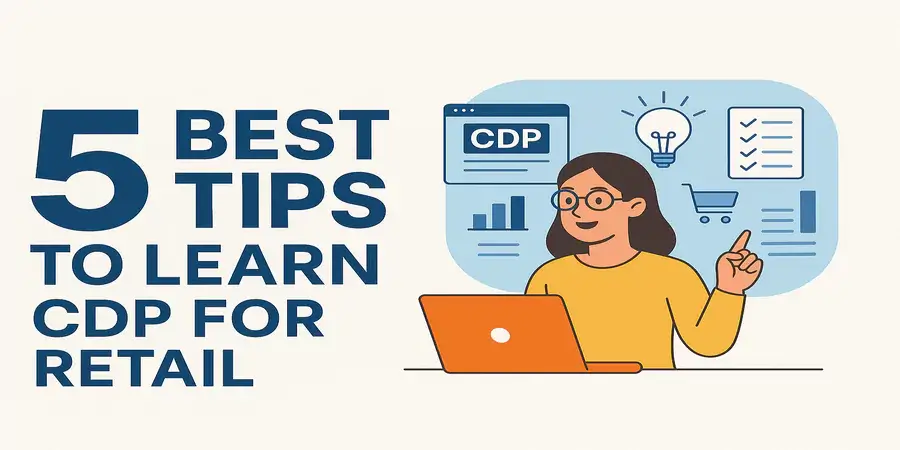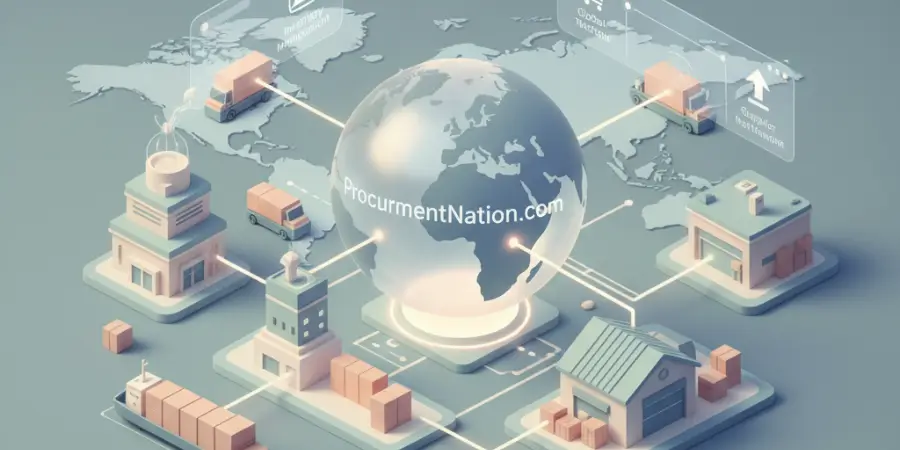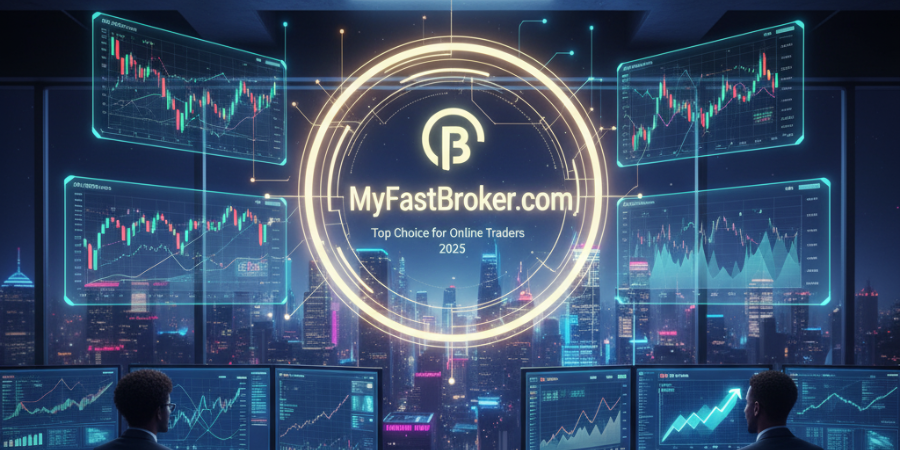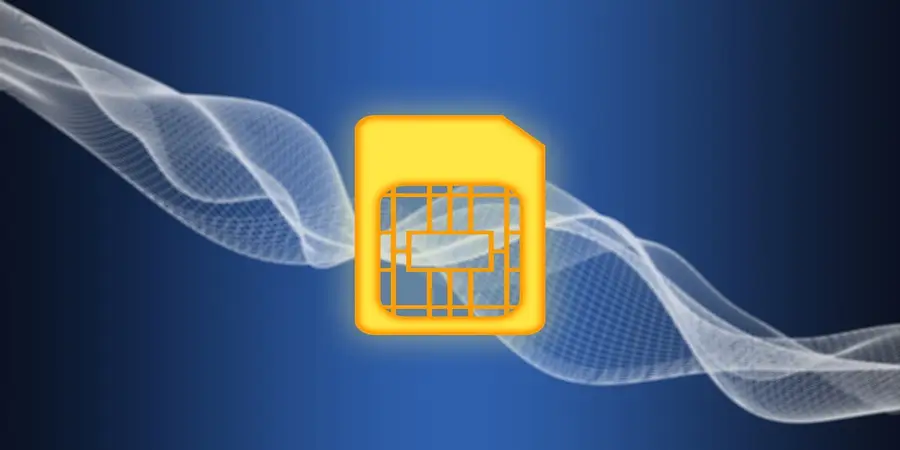Customer Data Platforms have evolved from marketing technology buzzword to operational necessity for retail organizations competing in omnichannel environments. According to Gartner’s 2024 Marketing Technology Survey, 68% of retail marketers identified unified customer data as their top technology priority, yet only 29% feel confident their current systems deliver accurate, real-time customer views. The gap between aspiration and execution stems from complexity retail CDPs must integrate point-of-sale systems, e-commerce platforms, mobile apps, loyalty programs, email systems, and advertising platforms while maintaining data governance, privacy compliance, and real-time activation capabilities. For retail professionals tasked with evaluating, implementing, or optimizing CDP technology, the learning curve extends beyond vendor demonstrations and marketing collateral. Mastering CDP for retail requires understanding data architecture fundamentals, integration challenges specific to retail ecosystems, identity resolution complexities, and measurement frameworks proving business value. This comprehensive guide provides strategic learning pathways, practical implementation insights, and evaluation frameworks that accelerate CDP competency development for retail organizations.
Understanding CDP Fundamentals in Retail Context
What Distinguishes CDPs from Existing Retail Data Infrastructure
Before diving into learning strategies, retail professionals must understand how Customer Data Platforms differ from existing technologies like CRM systems, data warehouses, and marketing automation platforms.
CDPs vs. CRM Systems: CRM platforms (Salesforce, Microsoft Dynamics) excel at managing known customer relationships tracking sales interactions, support tickets, and account information. CDPs capture both identified and anonymous customer data across all touchpoints before and after relationship establishment. In retail contexts, this means CDPs track anonymous browsing behavior on e-commerce sites, in-store foot traffic (via mobile signals), and social media engagement before customers make purchases or join loyalty programs.
CDPs vs. Data Warehouses: Enterprise data warehouses store historical data for analysis but rarely enable real-time activation. Retail data warehouses might update nightly, making yesterday’s insights available for today’s analysis. CDPs prioritize real-time or near-real-time data ingestion and activation when a customer abandons an online cart, CDPs can trigger email recovery campaigns within minutes, not the next day.
CDPs vs. Marketing Automation: Marketing automation platforms (Marketo, HubSpot, Braze) excel at campaign execution but typically operate with siloed customer data from their own channels. CDPs aggregate data from all sources, creating unified profiles that marketing automation platforms then use for more precise targeting.
According to retail technology analyst Brian Kilcourse from RSR Research, “Retail organizations often fail CDP implementations because they expect the technology to solve problems their existing infrastructure should handle. CDPs aren’t replacements for transaction systems, inventory management, or even CRM they’re integration and activation layers that make existing investments more valuable by breaking down data silos.”
The Retail CDP Technology Stack
Effective CDP learning requires understanding the complete technology ecosystem:
Data Sources (Inputs):
- Point-of-sale transaction systems
- E-commerce platforms (Shopify, Magento, custom)
- Mobile applications
- Loyalty/rewards programs
- Email marketing platforms
- Customer service systems
- Social media advertising platforms
- In-store sensors and beacons
- Call center interactions
CDP Core Functions:
- Data ingestion and normalization
- Identity resolution and customer profile unification
- Real-time data processing
- Segmentation and audience building
- Privacy and consent management
- Data quality and governance tools
Activation Channels (Outputs):
- Email service providers
- SMS/mobile messaging platforms
- Advertising platforms (Google, Facebook, programmatic)
- E-commerce personalization engines
- In-store clienteling apps
- Customer service systems
- Analytics and BI tools
Tip 1 – Build Foundation Through Structured Technical Learning
Essential Concepts Requiring Mastery
Rather than jumping directly into specific CDP platforms, effective learning begins with fundamental concepts that apply across all CDP implementations:
Identity Resolution: Understanding how CDPs match disparate data points to individual customers represents the most critical technical concept. Retail environments present unique challenges customers interact with brands through multiple devices, email addresses, physical locations, and often share devices with family members.
Identity resolution employs several methodologies:
- Deterministic matching: Connecting data points with shared identifiers (email address, phone number, loyalty ID)
- Probabilistic matching: Using statistical algorithms to infer that different identifiers likely belong to the same person based on behavioral patterns and attributes
- Household-level identification: Recognizing that multiple individuals share addresses and payment methods
The Forbes Technology Council recommends dedicating 2-3 weeks studying identity resolution specifically before platform training, as this concept underpins all CDP value creation.
Data Schema and Taxonomy: CDPs require standardized data structures. Retail organizations must define how they’ll categorize products, customer attributes, events, and transactions. Learning data modeling principles even basic concepts like normalization, primary keys, and relational structures dramatically improves CDP implementation success.
Resources for technical foundation building:
Coursera/edX Courses:
- “Data Management and Visualization” (Wesleyan University) – Covers data structures essential for CDP work
- “Customer Analytics” (Wharton) – Provides business context for CDP applications
- “Digital Marketing Analytics” (multiple providers) – Explains measurement frameworks
Industry Certifications:
- Customer Data Platform Institute offers CDP training and certification covering standards, use cases, and vendor evaluation
- MarTech Institute provides “Marketing Technology Specialist” certification including CDP modules
Technical Documentation: Most enterprise CDP vendors (Segment, Treasure Data, Adobe) publish extensive documentation freely accessible without purchasing their platforms. These resources explain concepts like event tracking, user properties, and data transformations using real retail examples.
Learning Through Hands-On Experimentation
Theoretical knowledge requires practical reinforcement. Several approaches enable hands-on CDP experience without enterprise software budgets:
Free/Freemium CDP Platforms:
- Segment (Free Tier): Allows 1,000 monthly tracked users sufficient for learning core concepts
- RudderStack (Open Source): Fully functional CDP that can be self-hosted, enabling unlimited experimentation
- Freshpaint (Free Tier): Healthcare-focused but illustrates CDP principles applicable to retail
Practice Projects: Create mock retail scenarios:
- Build simple e-commerce site using Shopify trial
- Implement CDP tracking on product views, cart additions, purchases
- Send data to email platform (Mailchimp free tier) and analytics tool (Google Analytics)
- Create customer segments based on behavior
- Trigger automated campaigns
This exercise completable in 2-3 weeks provides visceral understanding of data flow, integration challenges, and activation possibilities.
Tip 2 – Deep-Dive Into Retail-Specific CDP Applications and Use Cases
Personalization at Scale
The primary retail CDP application involves delivering personalized experiences across channels based on unified customer understanding. However, “personalization” encompasses diverse capabilities requiring different technical implementations:
Product Recommendations: CDPs enable sophisticated recommendation engines by providing complete purchase and browsing history. Unlike isolated e-commerce platform recommendations (based only on website behavior), CDP-powered recommendations incorporate in-store purchases, call center inquiries, and loyalty program activity.
Leading implementations:
- Collaborative filtering: Recommending products purchased by customers with similar profiles
- Content-based filtering: Suggesting products similar to previous purchases
- Hybrid approaches: Combining multiple methodologies
- Real-time context: Adjusting recommendations based on current browsing session, location, weather, and inventory availability
Dynamic Content: CDPs enable website, email, and mobile app content personalization. A customer who previously purchased running shoes sees athletic apparel on homepage visits, while a customer who bought formal wear sees dress clothing.
Retail-Specific Learning Resources:
Case Studies with Technical Detail:
- Sephora’s CDP implementation (detailed in Harvard Business Review) – Shows how the beauty retailer unified 150 million customer profiles across e-commerce, mobile app, and 2,600 stores
- Nike’s unified commerce strategy (documented in Retail Dive) – Explains how CDP enables inventory visibility across channels and personalized product drops
- Starbucks’ Deep Brew platform (covered in MIT Sloan Management Review) – Illustrates AI-driven personalization powered by CDP data
Retail Industry Reports:
- National Retail Federation’s “State of Retail Technology” (annual) – Includes CDP adoption statistics and use case analysis
- Forrester’s “Retail Technology Playbook” – Provides vendor comparisons and implementation frameworks
- Gartner’s “Magic Quadrant for Customer Data Platforms” – Offers objective vendor assessment
Omnichannel Journey Orchestration
Modern retail operates across physical stores, e-commerce, mobile apps, social commerce, and emerging channels (voice assistants, AR/VR). CDPs enable coordinated experiences across these touchpoints:
Cross-Channel Attribution: Understanding which marketing touchpoints contribute to conversions. A customer might discover a product on Instagram, research it via Google search, visit a physical store to examine it, then purchase online using a promo code from email. CDPs track this complete journey, enabling proper marketing investment allocation.
Buy Online, Pick Up In Store (BOPIS): These transactions generate data across multiple systems e-commerce platform captures order, inventory system allocates stock, POS processes payment, store app notifies readiness. CDPs unify these data points for complete transaction visibility and customer journey understanding.
Clienteling Applications: Retail associates equipped with tablets or mobile devices access unified customer profiles showing purchase history, preferences, wishlist items, and recommended products. This transforms store visits from transactional to consultative experiences.
Learning Approach: Identify retailers executing strong omnichannel experiences (Nordstrom, Walmart, Target, Home Depot) and analyze their customer journeys. Create journey maps documenting touchpoints, then research how CDP technology enables observed capabilities.
Tip 3 – Master Data Integration and Technical Architecture
Understanding Retail Data Integration Challenges
Retail organizations operate complex technology ecosystems accumulated through decades of legacy system investments, acquisitions, and point solutions. CDP success depends on integration with these systems a nontrivial challenge requiring technical knowledge.
Common Integration Patterns:
API-Based Integration: Most modern systems offer RESTful APIs enabling real-time data exchange. CDPs make API calls to source systems (requesting customer data, product catalogs, inventory levels) and destination systems (sending audience segments, triggering campaigns).
Learning requirement: Basic API concept understanding how authentication works, request/response structures, rate limiting, error handling. Resources include Postman tutorials and API documentation from retail platforms like Shopify, Salesforce Commerce Cloud.
Batch File Transfer: Legacy systems often can’t provide real-time APIs. Data transfers occur via scheduled file exports (CSV, XML, JSON) uploaded to CDPs. This requires understanding file formats, data mapping, and scheduling considerations.
Event Streaming: High-volume, real-time data (website clickstream, in-store sensors) uses event streaming architectures. Technologies like Apache Kafka enable millions of events per second flowing into CDPs.
Learning requirement: Event streaming concept understanding pub/sub models, message queues, stream processing. Apache Kafka documentation and LinkedIn Learning courses provide accessible introductions.
Practical Learning Exercise:
Select three systems from a typical retail stack:
- E-commerce platform (Shopify, BigCommerce)
- Email marketing platform (Mailchimp, Klaviyo)
- Analytics tool (Google Analytics, Mixpanel)
Study their integration documentation. Understand:
- What data each system can send/receive
- What authentication methods they use
- What limitations exist (rate limits, data retention)
- What pre-built integrations exist vs. requiring custom development
This exercise requiring 10-15 hours provides realistic sense of integration complexity without actual CDP purchase.
Data Governance and Privacy Compliance
CDPs centralize customer data, making them subject to intense privacy regulation scrutiny. Retail CDP professionals must understand:
GDPR (General Data Protection Regulation): European regulation affecting any retailer serving EU customers. Key requirements include explicit consent for data collection, right to access personal data, right to deletion, data portability, and breach notification.
CCPA/CPRA (California Consumer Privacy Act/Rights Act): California regulations providing similar protections, affecting retailers serving California customers.
Industry-Specific Regulations: Retailers selling age-restricted products (alcohol, tobacco) face additional compliance requirements. Those accepting credit cards must comply with PCI-DSS standards affecting how payment data integrates with CDPs.
Learning Resources:
- International Association of Privacy Professionals (IAPP) offers certification programs (CIPP/US, CIPP/E) covering major privacy regulations
- CDP vendor documentation typically includes compliance guides explaining how their platforms address regulatory requirements
- Legal technology blogs (IAPP Resource Center, Fieldfisher Privacy and Information Law) provide practical guidance
Organizational Learning: Even if not personally responsible for legal compliance, CDP practitioners must understand how regulatory requirements impact technical implementation what data can be collected, how long it can be retained, what controls must exist for data access and deletion.
Tip 4 – Engage With Retail CDP Practitioner Communities
Industry Forums and Professional Networks
Learning accelerates dramatically through community engagement with practitioners solving similar challenges:
CDP-Specific Communities:
Customer Data Platform Institute (cdpinstitute.org): Industry association providing:
- Vendor-neutral CDP education
- Quarterly webinars featuring implementation case studies
- Active LinkedIn group with 15,000+ members discussing technical challenges
- Annual CDP conference connecting practitioners
CDP.com Community: Independent forum where practitioners discuss:
- Vendor selection criteria and experiences
- Technical integration challenges and solutions
- Career development in CDP/MarTech fields
- Emerging trends and technologies
Retail Technology Communities:
Retail Technology Group (retailtechnologygroup.com): Industry association for retail IT professionals, with active CDP discussions in their forums and monthly virtual meetings.
National Retail Federation (NRF) Tech Community: Connects retail technology professionals through conferences (NRF Big Show includes extensive technology track), online forums, and regional chapters.
LinkedIn Groups:
- “Retail Technology Professionals” (25,000+ members)
- “Customer Data Platform (CDP) Professionals” (18,000+ members)
- “Retail Marketing & Customer Experience” (31,000+ members)
Vendor User Communities
Major CDP vendors maintain user communities providing implementation guidance, feature announcements, and peer networking:
Segment Community: Active Slack workspace where Segment customers and implementation partners answer technical questions, share code snippets, and discuss best practices.
Adobe Experience League: Comprehensive learning platform for Adobe CDP (formerly Audience Manager) users, featuring tutorials, certification programs, and community forums.
Salesforce Trailblazer Community: Massive community (10+ million members) with dedicated sections for Salesforce CDP (formerly Evergage) users.
Value Proposition: These communities provide access to practitioners with deep platform-specific knowledge who’ve solved technical challenges you’ll encounter. Lurking initially, then gradually participating as knowledge grows, accelerates learning dramatically.
Consulting and Implementation Partner Networks
CDP implementations rarely succeed without experienced guidance. Engaging with implementation partners even without immediate project needs provides learning opportunities:
System Integrators: Companies like Deloitte Digital, Accenture Interactive, and PwC Digital maintain retail CDP practices. Their published case studies, webinars, and thought leadership content provide implementation frameworks.
Specialized CDP Consultancies: Firms like InfoTrust, Adswerve, and MetaRouter focus specifically on CDP implementations, offering deep technical expertise.
Learning Approach: Follow these firms on LinkedIn, subscribe to their blogs, attend their webinars. Many offer free consultation calls where they’ll assess your CDP readiness and provide high-level guidance valuable learning opportunities even without immediate purchasing intent.
Tip 5 – Develop Measurement Frameworks and Business Acumen
Proving CDP Value Through Metrics
Technical CDP proficiency means little without ability to demonstrate business value. Retail executives evaluating CDP investments demand quantified ROI learning how to measure and communicate CDP impact proves as important as technical implementation skills.
Common Retail CDP Metrics:
Customer Lifetime Value (CLV) Improvement: CDPs enable personalization and retention programs increasing how much customers spend over their entire relationship with retailers. Measuring CLV before and after CDP implementation quantifies value.
Calculation: CLV = (Average Purchase Value × Purchase Frequency × Customer Lifespan)
Strong CDP implementations increase CLV 15-30% according to Boston Consulting Group research analyzing 200+ retail CDP projects.
Marketing Efficiency Metrics:
- Cost Per Acquisition (CPA) reduction: Better targeting decreases wasted ad spend
- Email engagement improvement: Personalized emails typically achieve 2-3x higher open and click rates
- Conversion rate increases: Personalized experiences convert 5-15% higher than generic experiences
Operational Efficiency Metrics:
- Reduction in manual data processing: Automated data integration eliminates manual reporting and analysis
- Faster campaign deployment: Unified data enables launching campaigns in hours vs. weeks
- Improved inventory allocation: Better demand understanding reduces markdowns and stockouts
Building Business Cases
Learning to construct compelling business cases for CDP investments develops crucial skills for career advancement and organizational influence:
Business Case Components:
Problem Statement: Clearly articulate current challenges fragmented customer data, inability to personalize at scale, inefficient marketing spend, incomplete customer journey understanding.
Proposed Solution: Explain how CDP addresses specific challenges with technical detail appropriate for audience (executive summary for C-suite, technical architecture for IT stakeholders).
Financial Analysis:
- Implementation costs: Software licensing, integration services, ongoing maintenance
- Expected benefits: Revenue increases, cost reductions, risk mitigation
- ROI calculation: (Total Benefits – Total Costs) / Total Costs × 100
- Payback period: How long until benefits exceed costs
Risk Assessment: Acknowledge implementation challenges, data quality issues, organizational change requirements, competitive risks of inaction.
Implementation Roadmap: Phased approach showing quick wins (weeks), foundational capabilities (months), and advanced applications (quarters/years).
Learning Resources:
Business case templates:
- Forrester’s “Build The Business Case For A CDP” framework
- Gartner’s “Marketing Technology Investment Framework”
- CDP vendor ROI calculators (most major vendors provide them, though adjust assumptions as they’re optimistically biased)
Retail financial analysis courses:
- Harvard Business School Online “Financial Accounting”
- Coursera “Finance for Non-Finance Professionals”
- Industry-specific: NRF Foundation’s retail financial management courses
Platform-Specific Deep Dives
Major Retail CDP Platforms Worth Studying
While vendor-neutral knowledge provides foundation, platform-specific expertise increases marketability and implementation effectiveness:
Segment (Twilio):
- Strengths: Developer-friendly, extensive integration library (450+ pre-built connectors), flexible data routing
- Retail fit: Best for digitally-native retailers with strong engineering teams
- Learning path: Segment University offers free courses; extensive documentation; active GitHub repository with code examples
Salesforce CDP (formerly Evergage):
- Strengths: Native Salesforce integration, real-time personalization, journey orchestration
- Retail fit: Retailers already using Salesforce ecosystem; those prioritizing in-session personalization
- Learning path: Trailhead learning platform offers structured modules; Trailblazer Community provides peer support
Adobe Real-Time CDP:
- Strengths: Enterprise-scale, sophisticated segmentation, strong B2C focus, integration with Adobe Experience Cloud
- Retail fit: Large retailers with substantial marketing budgets; those using Adobe Analytics/Target
- Learning path: Adobe Experience League offers comprehensive tutorials, certification programs, and sandbox environments
Treasure Data:
- Strengths: Data lake architecture, handles massive scale, strong in Asia-Pacific
- Retail fit: Global retailers, those with extremely high data volumes
- Learning path: Treasure Data University, vendor-provided sandbox environments
Bloomreach (Exponea):
- Strengths: E-commerce native, combines CDP with CMS and search
- Retail fit: Mid-market online retailers seeking integrated commerce stack
- Learning path: Bloomreach Academy, implementation partner training
Microsoft Dynamics 365 Customer Insights:
- Strengths: Azure integration, Microsoft ecosystem synergy, strong B2B capabilities
- Retail fit: Retailers using Microsoft technology stack, B2B/wholesale businesses
- Learning path: Microsoft Learn platform, certification paths
Comparative Learning Approach:
Rather than attempting to master all platforms simultaneously, experienced practitioners recommend:
- Choose one platform for deep-dive learning (12-20 hours)
- Complete vendor training/certification
- Build practical implementation using trial/sandbox environment
- Broadly study 2-3 additional platforms (4-6 hours each) to understand different architectural approaches
- Maintain awareness of emerging vendors and platform evolution
Advanced Topics for Continued Learning
AI and Machine Learning in Retail CDPs
Leading CDPs increasingly incorporate AI/ML capabilities requiring new knowledge domains:
Predictive Modeling:
- Churn prediction: Identifying customers likely to defect
- Next-best-product recommendations: ML-powered product suggestions
- Lifetime value prediction: Forecasting customer value for acquisition investment decisions
- Inventory optimization: Demand forecasting based on customer behavior patterns
Learning requirement: Basic machine learning concepts supervised vs. unsupervised learning, training data requirements, model evaluation metrics. Resources include Andrew Ng’s Machine Learning course (Coursera) and “An Introduction to Statistical Learning” textbook.
Natural Language Processing (NLP): CDPs analyze customer service transcripts, product reviews, and social media mentions to understand sentiment and intent. NLP applications include automated review categorization, chatbot conversation analysis, and voice-of-customer insights.
Emerging Technologies Impacting Retail CDPs
Composable CDP Architecture: Rather than monolithic platforms, composable CDPs use modular components separate tools for data warehousing (Snowflake, BigQuery), activation (Census, Hightouch), and identity resolution (LiveRamp, Amperity). This approach offers flexibility but increases complexity.
First-Party Data Strategies: As third-party cookies disappear and privacy regulations tighten, CDPs increasingly focus on first-party data collection and activation. Learning how to build opt-in data collection strategies, loyalty program integration, and value exchanges for data becomes critical.
Real-Time Personalization at Edge: CDPs are evolving to push decisioning logic to edge locations (user devices, retail stores) rather than centralized servers, enabling sub-100-millisecond personalization decisions even without network connectivity.
Career Development and Specialization Paths
CDP-Related Career Opportunities in Retail
Mastering retail CDP creates diverse career opportunities:
Implementation Specialist/Consultant: Helping retailers select, implement, and optimize CDPs. Typical progression: Junior consultant → Senior consultant → Solution architect → Practice lead. Compensation ranges: $75K-$180K+ depending on experience and geography.
Retail Marketing Technologist: Bridging marketing strategy and technical execution within retail organizations. Manages CDP along with broader MarTech stack. Compensation: $90K-$150K+.
Customer Data Analyst/Scientist: Extracting insights from unified customer data, building segments, measuring program effectiveness. Compensation: $85K-$160K+.
Product Manager (CDP Vendor): Working for CDP companies to define product roadmaps, prioritize features, and guide development. Compensation: $120K-$200K+.
Continuing Education and Skill Development
CDP technology evolves rapidly continuous learning remains essential:
Annual Industry Conferences:
- NRF Big Show (January) – Retail technology showcase
- Adobe Summit (March) – Adobe ecosystem including CDP
- Gartner Marketing Symposium/Xpo (various dates) – Marketing technology trends
- Customer Data Platform Institute conferences – CDP-specific content
Industry Publications:
- MarTech Today
- Retail Dive Technology section
- Modern Retail
- Chain Store Age Technology section
Professional Development Plan Template:
Quarterly Goals:
- Complete one in-depth course or certification
- Attend one industry conference or webinar series
- Read three case studies covering novel implementations
- Experiment with one new CDP feature or integration
Annual Goals:
- Achieve one new certification
- Present at industry conference or write article sharing learnings
- Expand network by 20+ relevant connections
- Contribute to open-source CDP project or community resource
Implementing Your CDP Learning Plan
Suggested 90-Day Learning Timeline
Weeks 1-3: Foundation Building
- Complete “Customer Analytics” online course
- Read CDP Institute “CDP 101” guide
- Study identity resolution concepts
- Set up trial CDP account (Segment/RudderStack)
Weeks 4-6: Technical Skills Development
- Complete platform-specific training (chosen CDP)
- Practice data integration exercises
- Study API documentation from retail platforms
- Build mock retail data pipeline
Weeks 7-9: Use Case and Application Focus
- Analyze 5 retail CDP case studies
- Map customer journeys for 3 retail scenarios
- Join 3 professional communities
- Attend 2 industry webinars
Weeks 10-12: Business Acumen and Specialization
- Build sample CDP business case
- Study privacy regulations (GDPR/CCPA)
- Choose specialization area (personalization, analytics, architecture)
- Begin platform certification process
Beyond 90 Days:
- Maintain community engagement
- Stay current with industry publications
- Pursue advanced certifications
- Seek practical implementation opportunities
Measuring Your Learning Progress
Knowledge Assessment:
- Can you explain CDP architecture to non-technical stakeholders?
- Can you identify appropriate use cases for CDP in retail scenarios?
- Can you evaluate trade-offs between different CDP platforms?
- Can you design data integration approaches for common retail systems?
Practical Capabilities:
- Can you configure basic CDP implementation?
- Can you create customer segments based on behavioral data?
- Can you map data flows across retail technology ecosystem?
- Can you calculate ROI for CDP initiatives?
Professional Recognition:
- Have you obtained relevant certifications?
- Have you contributed to community discussions?
- Have you successfully influenced CDP decisions in professional context?
- Are you recognized as CDP resource within your organization/network?
Common Learning Pitfalls to Avoid
Vendor-Specific Tunnel Vision: Learning only one platform limits career flexibility and prevents understanding alternative architectural approaches. Maintain broad awareness even while developing deep expertise in specific platforms.
Ignoring Business Context: Technical CDP proficiency without understanding retail business models, customer behavior, and financial metrics limits professional value. Balance technical and business learning.
Analysis Paralysis: The CDP landscape includes 100+ vendors and continuous innovation. Perfect knowledge is impossible develop “good enough” understanding to make decisions and refine through experience.
Neglecting Soft Skills: CDP success requires cross-functional collaboration communicating with marketing stakeholders, negotiating with IT, presenting to executives. Invest in communication, project management, and change management skills alongside technical capabilities.
Underestimating Organizational Change: Technology represents 30-40% of CDP challenges; organizational change management comprises the remainder. Learn how to drive adoption, overcome resistance, and demonstrate value to skeptical stakeholders.
The Path Forward: Mastering CDP for Retail Success
Learning Customer Data Platforms for retail applications represents a substantial but achievable undertaking. The journey from conceptual understanding to practical mastery typically spans 6-12 months of focused effort online courses and certifications (100-150 hours), hands-on experimentation (50-100 hours), case study analysis (30-40 hours), and community engagement (ongoing).
The investment yields substantial returns. CDP expertise positions professionals at the intersection of marketing, technology, and customer experience domains driving retail competitive advantage. Organizations increasingly recognize that customer data infrastructure determines their ability to compete against digital-native disruptors and meet evolving consumer expectations.
For retail professionals beginning their CDP learning journey, the path ahead involves technical skill development, business acumen cultivation, industry engagement, and continuous adaptation as technologies and best practices evolve. Success requires balancing breadth (understanding diverse approaches and platforms) with depth (developing genuine expertise in specific areas).
The retail industry’s digital transformation continues accelerating, and Customer Data Platforms stand at the center of this evolution. Professionals who invest in mastering CDP concepts, technologies, and applications position themselves to drive meaningful business impact while building rewarding, future-proof careers in retail technology.
















